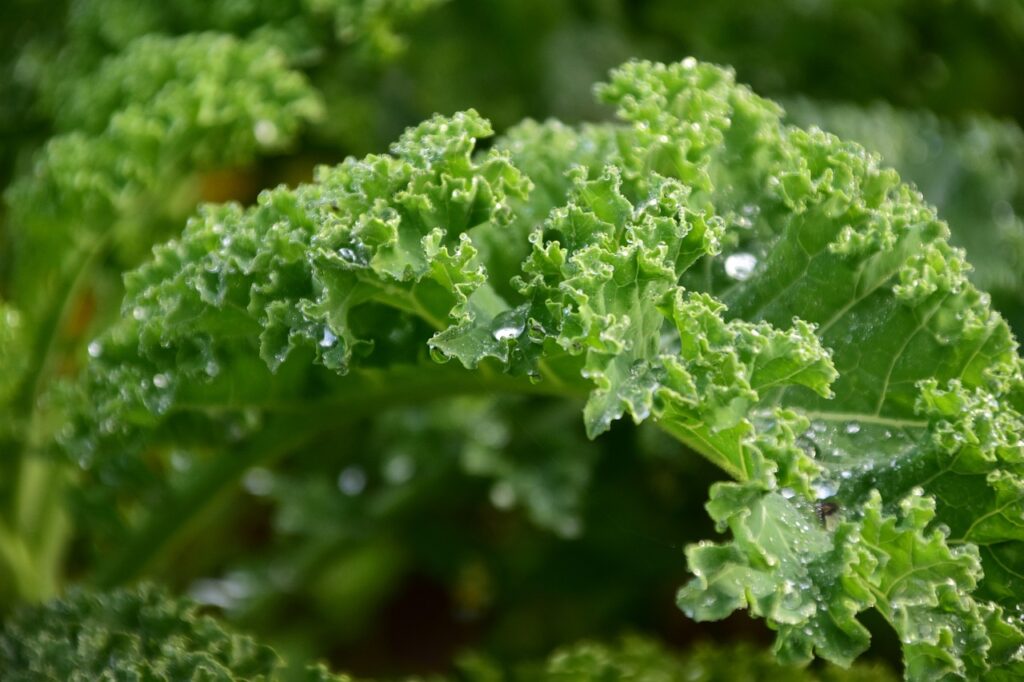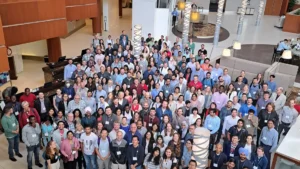In the realm of gastronomy, two seemingly distinct domains merge to create a symphony of flavors: food writing and plant breeding. A candid conversation with food critic Hanna Raskin at today’s opening day of the National Association of Plant Breeders (NAPB) annual meeting in Greenville, SC, unravelled the untrodden paths of plant breeding and its profound influence on the epicurean landscape.
Raskin, who publishes a newsletter called The Food Section, has written extensively about food, restaurants, and culinary culture since 2006, often focusing on the local food scene in Charleston, SC. Raskin is known for her insightful and informative writing style, providing readers with in-depth analysis and commentary on various aspects of the food industry.
But she’s not used to taking the stage in front of hundreds of plants breeders, she says. Beyond the culinary lexicon lies a vast expanse of plant breeding, a world she admits to having limited knowledge about. Clarifying the common misconception that food writing solely encompasses restaurant critiques, she quickly showed the audience that her knowledge of current food trends is vast. She opined on a number of topics of interest to this year’s NAPB attendees, including the following.
On the Resurgence of Beans:
Raskin has always been a bit captivated by the humble yet versatile legume. She envisions a future where beans extend their reach beyond mere culinary curiosities, becoming flavor powerhouses accessible to all. “I’d love to see more work on beans. They’re super tasty and everyone can afford them.”
On Engaging with Plant Breeders:
Raskin acknowledges the importance of collaborations with entities such as the Clemson University research station and the USDA. These partnerships have opened windows to a kaleidoscope of flavors, with watermelons assuming a prominent role in her explorations. Watermelons, with their Southern roots intertwined with culture and tradition, become a living testament to the wonders of plant breeding, she says. “It’s hard to deny that everyone loves watermelon; it’s always a hit. It’s probably on par with barbecue when it comes to popular food choices in the South.”
On the Trials of Food Writing:
Sometimes perceived as mere arbiters of personal taste, food writers like Raskin grapple with the daunting task of conveying the intricate tapestry of their craft. It’s an endeavor that extends beyond subjective preferences, transcending into the realms of culture, tradition, and societal dynamics. Enlightening the masses about the multifaceted nature of their work becomes a paramount mission, she says. “People don’t really understand what my job is. And in fact, I think it’s harder than many people imagine because they hear the phrase food writer and they think it means I go eat a meal and just say if I liked it or not, and there’s so much more to food writing.”
On Respecting Consumer Palates:
Raskin underlines the cardinal virtue of honoring consumer preferences and palates. She encourages plant breeders to delve into the boundless tapestry of taste; welcome the willingness of consumers to embrace novel flavors and textures, she says. In understanding and respecting their desires, plant breeders can sow the seeds of innovation, creating crops that resonate with a broader audience. “We’ve found that consumers will tolerate more than we think; people are braver and more adventurous than sometimes the industry believes.”

On the Kale Revolution:
In the span of two decades, kale has become an emblematic success story, epitomizing the transformative power of lesser-known crops within popular food culture. “It’s everywhere, right? I can’t think of any other fruit or vegetable that’s had an upward trajectory like kale has.”
On Climate Change Concerns for Southern Farmers:
The absence of peaches this summer in states like Georgia serves as a stark reminder of the changing climate, she notes. Contrary to the belief that there is reluctance among farmers to accept climate change, it is clear that they are well aware of its implications, she says. The focus has shifted towards understanding how to adapt to the changing weather patterns and the subsequent modifications in crop selection and farming strategies.
On Adapting to Changing Climates:
Farmers recognize the need to adapt and evolve in response to climate change. Raskin says it’s evident that farmers are not merely bystanders but active participants in confronting the challenges posed by a changing climate. Continuous monitoring, staying informed, and making necessary adjustments are key elements of their approach to sustain their farms in the face of uncertainty, she says.
On Why Food with Stories Attached to it Wins Over Consumers:
With the highly competitive landscape that is the restaurant industry, chefs seek novelty to captivate diners and differentiate themselves, she says. Social media platforms and the allure of Instagram-worthy dishes have intensified this pursuit. The desire for unique flavors and visually enticing ingredients drives the demand for new fruits, vegetables, and heritage varieties with intriguing stories attached to them.
On the Fascination with Heritage Crops:
Chefs are particularly drawn to heritage crops that carry a sense of history and nostalgia, Raskin says. Rediscovering long-forgotten fruits and vegetables becomes an exciting endeavor. The allure lies in resurrecting once-lost flavors, sparking interest among consumers who crave the extraordinary. The story behind a heritage crop, paired with culinary craftsmanship, contributes to the creation of enticing and memorable dishes that resonate with diners seeking an authentic gastronomic experience, she notes.
On Striving for Better Varieties:
For Raskin, it’s evident that chefs and the food industry are constantly searching for better-tasting varieties. The focus lies in enhancing flavor profiles, whether it be through improving existing crops or discovering new ones that provide unique taste experiences. “Everyone loves a good story. If you have a fig that no one has eaten in 100 years, that makes people want to eat it. Stories work.”
‚ÄîFollow our coverage of the NAPB’s 2023 meeting on Twitter all week!












